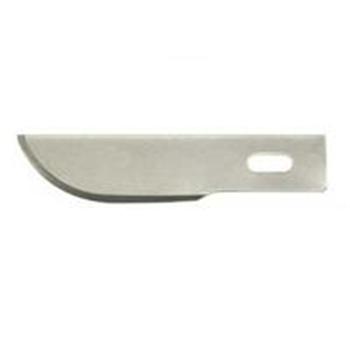Results 11 to 14 of 14
-
06-28-2015, 02:20 PM #11Senior Member



- Join Date
- Apr 2012
- Location
- Diamond Bar, CA
- Posts
- 6,553
Thanked: 3215
When you glue your scales together, as said make sure the insides are flat first, then use white glue or rubber cement with a piece of paper between them.
It does not have to be a crazy strong bond, there will be no force trying to separate the joint, just enough to hold them together. So you can shape them.
You can glue a block of wood to the outside of your scales with rubber cement to have something to hold on to and lap the insides flat on a sheet of fine sandpaper.
-
06-28-2015, 02:33 PM #12

For simplicity, just use an Xacto bade vertical to your wok as a scraper. a few judicious scrapes and you ar home free. You can also grind a radius on a utility knife blade; make sure it is perpendicular to the sides.. It is actually the tiny burr on the edge that does the scraping.

The is a wealth of information about scrapers on Google search. "making scrapers."
~RichardBe yourself; everyone else is already taken.
- Oscar Wilde
-
The Following User Says Thank You to Geezer For This Useful Post:
Euclid440 (06-28-2015)
-
06-28-2015, 11:07 PM #13Senior Member



- Join Date
- Feb 2015
- Location
- Duluth, GA - Atlanta OTP North
- Posts
- 2,546
- Blog Entries
- 1
Thanked: 315
Thank for the scraper suggestion. That seems like it would work better since you have more control of where the material is being removed and the amount.
Well, the wood scales I'm working on don't have a wedge yet. I can see the gap when I put the two scales together so I know they aren't perfectly flat.
I used the paper and glue before cutting and shaping the scales. That is why I mentioned sanding off paper/glue from the inside of the scales in the first post. Not a big deal though.
I believe my first mistake was not using even pressure when sanding off the glue/paper from the inside of the scales. I've thinking I should have done something like you mentioned at the end with a block. I may try that next time. ThanksLast edited by JP5; 06-28-2015 at 11:11 PM.
-
06-28-2015, 11:23 PM #14

This is how we learn! I have been playing in the shop/s for over 70 years and still am finding how much I yet need to figure out.
Like for honing, a dead flat surface is best. A sheet of granite or glass is a good base for sand paper. I use a bit of spray rubber cement carefully to hold the paper down. If I just use water under and over, the edges curl up and then I do not have a flat surface to lap my scales upon.
~RichardBe yourself; everyone else is already taken.
- Oscar Wilde
-
The Following User Says Thank You to Geezer For This Useful Post:
outback (06-29-2015)


 7Likes
7Likes LinkBack URL
LinkBack URL About LinkBacks
About LinkBacks






 Reply With Quote
Reply With Quote

